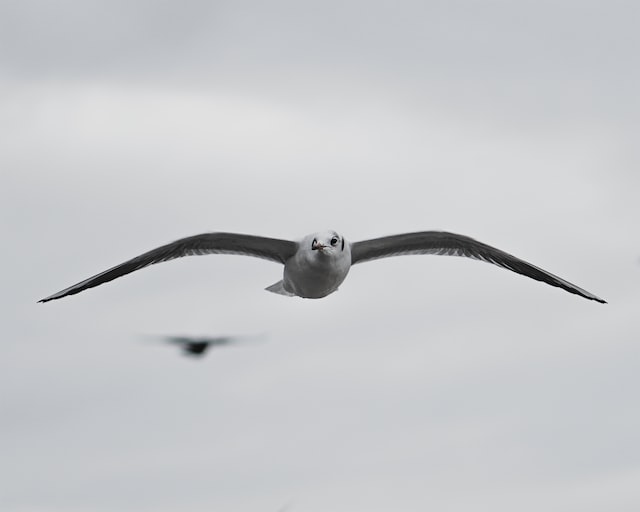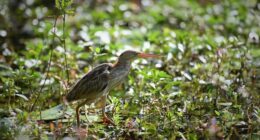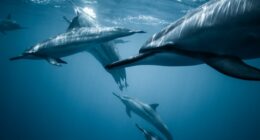Seagulls have shorter wings and smaller bills than albatross while the latter possess larger wings that enable them to soar above the ocean’s surface for long periods of time. Both species make their homes near coastlines where they can feed on fish and other marine life, although each bird prefers different habitats within these environments.
What is a seagull?
(Photo by Tarpit Grover on Unsplash )
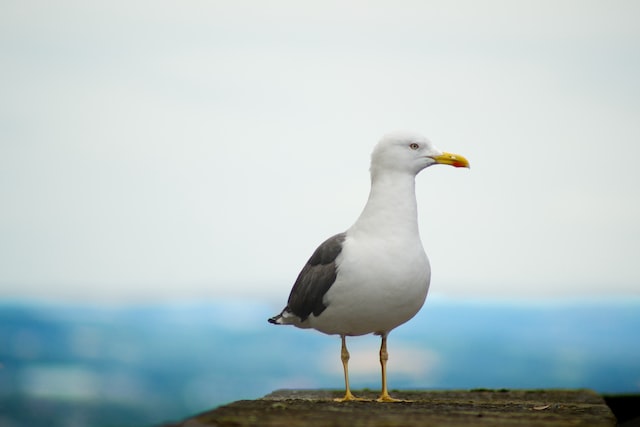
A seagull, also known as a gull, is a type of bird that belongs to the family Laridae. They are found near coastal areas and are known for their white feathers and distinctive, shrill cries. Seagulls are omnivores and feed on a variety of food, including fish, mollusks, insects, and carrion. They are also known for their scavenging behavior and can be found near human settlements, parks, and garbage dumps. Some species of seagulls are migratory, while others are year-round residents in their habitats. Overall, seagulls play an important role in the ecosystem, helping to control populations of small animals and insects and providing a food source for larger predators.
What is an albatross?
(Photo by Phil Botha on Unsplash )
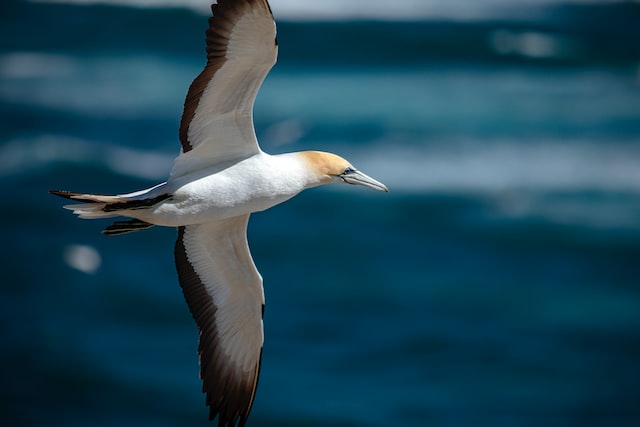
An albatross is a type of seabird that belongs to the family Diomedeidae. They are known for their large wingspan, which can reach up to 11 feet, and for their long-distance migration patterns, which can cover thousands of miles. Albatrosses are native to the Southern Ocean and the North Pacific Ocean, and they feed primarily on fish and squid.
Albatrosses are excellent fliers, and they use their long wingspan to soar for hours on end without flapping their wings. This ability allows them to cover large distances and find food more efficiently. Albatrosses are also known for their monogamous mating habits, with pairs often mating for life.
Despite their remarkable adaptations and beauty, albatrosses are facing several environmental threats, including plastic pollution, longline fishing, and habitat loss. Many species of albatross are now considered endangered, and conservation efforts are underway to protect these magnificent birds and their habitats.
What is the difference between seagulls and albatross?
There are a few key differences between seagulls and albatross. For one, seagulls are much smaller than albatross. Seagulls also have shorter beaks and less webbing between their toes than albatross. Additionally, seagulls typically live near the shore, while albatrosses can be found farther out to sea. Albatross can live for up to 50 years, while seagulls only live for about 20 years.
The Physical Differences
Seagulls, also known as gulls, are medium to large sized birds that can range from 18 to 56 cm in length and weigh anywhere from 340 to 2,000 grams. They have a distinctive white head, neck, and tail, with a gray or black back, wings, and legs. They are known for their wide, rounded wingspan and their agile, versatile flight capabilities.
Albatross, on the other hand, are much larger birds that can grow up to 100 cm in length and weigh anywhere from 2 to 7 kg. They have long, narrow wings that span up to 3.7 m, and they are able to fly long distances with minimal effort. They have a distinctive appearance, with white feathers covering most of their body, with dark markings on their wings and back.
Behavioral Differences
Seagulls are omnivores and are known for their scavenging habits. They can be found in a variety of habitats, from the ocean shore to landfills and garbage dumps, where they feed on a wide range of food, including fish, insects, and human food waste. They are highly social birds and often form large flocks.
Albatross, on the other hand, are primarily carnivores and feed on squid, fish, and krill. They are less social and more solitary, often only forming large colonies during the breeding season. They are known for their long-distance migration, with some species travelling over 20,000 km each year.
Habitat Differences
Seagulls are found all over the world, with different species inhabiting various coastal and inland habitats. They are adaptable birds and can thrive in a wide range of environments, from arctic tundra to tropical rainforests.
Albatross, on the other hand, are typically found in the Southern Ocean and around the Antarctic continent, with some species also found in the North Pacific. They are highly dependent on the ocean for their food and breeding habits, and they require large stretches of open water for their long-distance migration.
Breeding Differences
Seagulls typically breed in large colonies, with males and females forming pair bonds. They construct simple nests on the ground or on cliffs, and they lay 2 to 3 eggs per clutch. Both parents care for the eggs and chicks, with the male usually providing food for the female during the incubation period.
Albatross, on the other hand, breed in large colonies on remote islands, with males and females forming long-lasting pair bonds. They construct elaborate nests on the ground or on cliffs, and they lay only one egg per clutch. Both parents take turns incubating the egg and caring for the chick, with the male often traveling long distances to find food.
Conservation Status
Seagulls are considered to be a common and widespread species, with many populations increasing in recent years. They are not considered to be threatened, and they are often seen as a nuisance in urban areas due to their scavenging habits.
Albatross, on the other hand, are considered to be threatened or near threatened, with some species facing significant population declines due to habitat loss, overfishing, and plastic pollution. Conservation efforts are underway to protect
How to tell the difference between seagulls and albatross?
One of the easiest ways to tell the difference between seagulls and albatross is by their size. Seagulls are much smaller than albatrosses, with a wingspan that typically ranges from 2.5 to 3.5 feet. Albatrosses, on the other hand, have a wingspan that can reach up to 11 feet! Another way to tell these birds apart is by their beaks. Seagulls have long, thin beaks that they use to scavenge for food. Albatrosses have shorter, thicker beaks that are adapted for eating fish and squid. Finally, you can usually tell seagulls and albatrosses apart by their behavior. Seagulls are known for being pesky pests at beaches, often begging humans for food. Albatrosses, on the other hand, are more likely to be seen gracefully soaring over the ocean waves.
How do seagulls find a partner for mating?
Seagulls typically mate for life, and the process of finding a mate can vary depending on the species. Here are some common ways seagulls find a partner:
- Displays and Calls: Male seagulls will perform a series of displays, such as calling, posturing, and wing flapping, to attract a female. They may also engage in aerial displays to catch the attention of a potential mate.
- Nest Building: In some species, males will build a nest to attract a female. The size, location, and quality of the nest can be important factors in attracting a mate.
- Territorial Behavior: Some seagulls establish a territory, and males will defend it to attract a female. The size and quality of the territory can also play a role in attracting a mate.
- Pair Bonding: Once a male and female have paired up, they will continue to strengthen their bond through various behaviors, such as preening, feeding, and roosting together.
The process of finding a mate can vary depending on the species, but displays, calls, nest building, territorial behavior, and pair bonding are all common ways seagulls attract a mate.
How do albatross find a partner for mating?
Albatrosses typically form strong, lifelong bonds with their mates, and the process of finding a mate involves several behaviors and rituals. Here are some ways albatrosses find a partner:
- Displays and Calls: Male albatrosses will perform a series of displays and calls to attract a female. These displays can include bill clapping, bowing, and preening.
- Nest Building: Albatrosses often build nests together as part of the bonding process. Male albatrosses will gather materials and construct the nest, and females will help shape and decorate it.
- Courtship Dances: Albatrosses have elaborate courtship dances that they perform to attract a mate. These dances can involve synchronizing movements, bowing, and calling to each other.
- Mate Recognition: Albatrosses have a strong ability to recognize their mates, even after years apart. This recognition often involves a combination of visual and vocal cues.
Albatrosses use a combination of displays, calls, nest building, courtship dances, and mate recognition to find a partner for mating. These behaviors help reinforce the bond between mates and ensure the success of the breeding season.
What are the stages of a baby seagull until it is independent?
The stages of a baby seagull, from hatching to independence, typically include the following:
- Hatching: Baby seagulls, also known as chicks, hatch from their eggs after an incubation period of about 25-30 days.
- Nestling: During the first few weeks of life, the chicks are called nestlings and are completely dependent on their parents for food and warmth. The parents take turns incubating the eggs and feeding the chicks.
- Fledgling: As the chicks grow, they become more active and start to leave the nest. This stage is called fledgling, and the chicks continue to be fed by their parents while they learn to fly and find food on their own.
- Juvenile: Once the chicks can fly and feed themselves, they become juveniles. Juveniles still have their juvenile plumage, which is usually brown or gray and different from their adult plumage.
- Subadult: As the juveniles mature, they start to develop their adult plumage. This stage is called subadult, and the birds are almost fully grown but still have some growing to do.
- Independent: Once the seagulls are fully grown and can fly and find food on their own, they become independent. At this stage, they are ready to breed and start their own families.
The stages from hatching to independence can take anywhere from 4 to 12 months, depending on the species and the conditions in their environment.
What are the stages of a baby albatross until it is independent?
The stages of a baby albatross, from hatching to independence, typically include the following:
- Hatching: Baby albatrosses, also known as chicks, hatch from their eggs after an incubation period of about 65-70 days.
- Nestling: During the first few weeks of life, the chicks are called nestlings and are completely dependent on their parents for food and warmth. The parents take turns incubating the eggs and feeding the chicks.
- Fledgling: As the chicks grow, they become more active and start to leave the nest. This stage is called fledgling, and the chicks continue to be fed by their parents while they learn to fly and find food on their own.
- Juvenile: Once the chicks can fly and feed themselves, they become juveniles. Juveniles still have their juvenile plumage, which is usually brown or gray and different from their adult plumage.
- Subadult: As the juveniles mature, they start to develop their adult plumage. This stage is called subadult, and the birds are almost fully grown but still have some growing to do.
- Independent: Once the albatrosses are fully grown and can fly and find food on their own, they become independent. At this stage, they are ready to breed and start their own families.
The stages from hatching to independence can take anywhere from 3 to 7 years, depending on the species and the conditions in their environment. Albatrosses have a slow rate of growth and development, but this allows them to have a long lifespan and strong reproductive success.
Frequently asked questions about seagulls and albatross?
Can seagulls be kept as pets?
No, seagulls cannot be kept as pets. They are wild birds and are protected by law in many countries. In the United States, the Migratory Bird Treaty Act makes it illegal to own or possess a wild bird.
Can albatross be kept as pets?
No, albatross cannot be kept as pets. These birds are wild animals and are not meant to be kept in captivity. Not only is it illegal in many places to keep them as pets, but it is also cruel. Albatross need to fly free and have a lot of space to roam. They are not meant to be confined to a small cage or aviary.
Where are seagulls found?
Seagulls are a type of bird that is typically found near the coast or near large bodies of water. They are known for their scavenging habits and for being a nuisance to humans. Albatross, on the other hand, are a type of bird that is typically found far out to sea. They are known for their long-distance flying capabilities and for being very graceful in the air.
Where are albatross found?
Albatross are found in the Southern Ocean and on remote islands in the Pacific, Atlantic and Indian Oceans. They spend most of their life at sea, only coming ashore to breed.
Are seagulls friendly?
Yes, seagulls can be friendly, but it really depends on the individual bird. Some seagulls will approach people in hopes of getting food, while others may keep their distance. It really varies from bird to bird.
Are albatross friendly?
Yes, albatross are friendly! They are known to be curious and will often approach humans. While they may not land on your head like seagulls, they will gladly take food from your hand.
Featured Image By – Photo by Nikola Stojanovic on Unsplash
